- Home
- Dean Koontz
Writing Popular Fiction Page 15
Writing Popular Fiction Read online
Page 15
The Cold Dragon
The Warm Dragon
The Dancing Dragon
The Black Dragon
The Eternal Dragon
The Waiting Dragon
The Dead Dragon
Steel Dragon
The Crying Dragon
When that seemed to be leading nowhere, I tried following the word dragon with various prepositional phrases:
Dragon in the Darkness
Dragons on My Mind
Dragon in Amber
Dragon in the Sky
Dragon by the Tail
Dragon for the King
Dragon in the Land
Several of those attempts were good titles but didn't spark my imagination at that time. Next, I tried using a series of verbs with the key word:
The Dragon Stalks
The Dragon Watches
The Dragon Creeps
The Dragon Feasts at Midnight
The Dragon Fled
But none of those were particularly intriguing. I moved on, trying to amplify the title by adding another noun:
The Dragon and the Sea
The Dragon and the Night
The Dragon and the Knight
The Dragon and the Key of Gold
Finally, when I tried coupling the key word with other words that seemed at odds with it, I hit on the right track:
The Weak Dragon
The Sad Dragon
The Timid Dragon
The Tiny Dragon
The Soft Dragon
The contrast in the last somehow appealed to me. I began toying with different applications of it:
The Soft Dragon
The Dragon Who Screamed Softly
The Dragon Who Walked Softly
The Dragon Came Softly
And finally the title was there, effective because of its slightly altered word order and its contrasts:
Soft Come the Dragons
After an hour of word games, I had hit upon a set of words that broke open that inner storeroom and set my mind to racing. In another few minutes, I had an entire plot in mind, concerning an alien world where flying dragons, as insubstantial as tissue paper, are inexplicably able to kill with their gaze. When I chose the proper characters and motivations, those too came naturally, with very little work. The resultant story received a modest amount of acclaim, brought me a couple of dozen fan letters in the years after its publication, became the title story of a paperback collection of some of my science fiction pieces, and has been published in Spain, France, and Japan. The muse had been reluctant that day, but I tickled her feet with a mental feather until she got to work!
For many reasons, you should keep a notebook full of ideas-mine is unorganized, chaotic but full of rich little bits written in at random-titles, scraps of dialogue and character sketches, so that you may return to these at a later date to get a sluggish imagination going again. But if you use the playing-with-exotic-titles game to get story ideas, you'll find a notebook especially valuable. That morning I spent coming up with "Soft Come the Dragons" has provided me with two additional stories. Months after that session, perusing my notes, I struck on the title "Dragon in the Land," which had not intrigued me at the time, and wrote and sold a story with the title as the jumping off point. A third title, "Dragon in Amber," inspired yet another story which I am presently completing. Three titles using the same key word is the limit for one writer, lest the similarities confuse his readers, Yet, none of these stories would have existed today had I not begun to tease my mind with this little word game.
Other stories and novels I've generated in this manner include A Werewolf Among Us, Dark of the Woods, Island of Shadows, Cold Terror, "To Behold the Sun."
"The Temple of Sorrow," and "The Terrible Weapon."
Science fiction and fantasy, because of their predilection for unusual titles, are the best genres on which to work this word game, though it is applicable to any category and has worked well, for me, with Gothics and suspense novels.
METHOD TWO: PLAYING WITH THE NARRATIVE HOOK
This game is similar to the first, though you begin with a narrative hook (a sentence that will grab the reader's attention), not a title You sit at the typewriter and, without a great deal of cerebral exercise, type an intriguing opening sentence or paragraph. It is not necessary to know where the story will go. The idea is to present yourself with interesting and challenging beginnings out of which, when your free associations begin to jell, you will be able to construct a completed work. Write one new beginning after another, no matter how wild they seem, how impossible the development of a reasonable piece of fiction may appear to be from them. Shortly, you will find yourself so interested in one of these hastily jotted openings that you won't rest until you've carried on with it.
The first piece I generated in this fashion was a novelette titled "Where the Beast Runs." After its magazine publication, I incorporated it as the middle section of a novel, Fear That Man. It begins:
Long ago, shortly after my mother's blood was sluiced from the streets of Changeover and her body burned upon a pyre outside of town, I suffered what the psychologists call a trauma. That seems like a very inadequate word to me.
The bizarre circumstances of that off-the-top-of-the-head opening spurred my imagination into working up a story to explain them.
In a short story, "Shambolain," I introduced several characters that caught my fancy-just by the nature of their names-and continued to write what I feel is one of my two or three best short stories:
Four days before Christmas, I had my first of two troubles with the Creep and Delia grew ill and Shambolain arrived-and nothing was ever quite the same after that.
As an extension of this muse-kicker, you sit at the typewriter and work up paragraph after paragraph of character descriptions, until one of them interests you enough to build a story around him. This happened to me with the short story "A Third Hand," which I eventually expanded into the novel Starblood:
Timothy was not human. Not wholly. If one included arms and legs in a definition of the human body, then Timothy did not pass the criteria necessary for admission to the club. If one counted two eyes in that definition, Timothy was also ruled out, for he had but one eye, after all, and even that was placed in an unusual position: somewhat closer to his left ear than a human eye should be and definitely an inch lower in his overlarge skull than was the norm. Then there was his nose. It totally lacked cartilage. The only evidence of its presence was two holes, the ragged nostrils, punctuating the relative center of his bony, misshapen head.
There was his skin: waxy yellow like some artificial fruit and coarse with large, irregular pores that showed like dark pinpricks bottomed with dried blood. There were his ears: very flat against his head and somewhat pointed like the ears of a wolf. There were other things that would show up on a closer, more intimate examination, things like his hair (which was of an altogether different texture than any racial variant among the normal human strains), his nipples (which were ever so slightly concave instead of convex), and his genitals (which were male, but which were contained in a pouch just below his navel and not between his truncated limbs). There was only one way in which Timothy was remotely human, and that was his brain. But even here, he was not entirely normal, for his IQ was slightly above 250.
How did Timothy become as he is shown? What problems would such a freak have? What would his outlook on the world be? What kind of adventure might he have about which to base a story? I ended up writing "A Third Hand" to satisfy my own curiosity as much as to entertain a reader.
Of course, most of your ideas will not be generated in any of the ways I've described, but will float unbidden from your subconscious. Only a team of psychiatrists could ever deduce what all contributed to these "spontaneous" ideas. Still, you can help these stories surface if you read, read, read. With every novel you read, thousands of facts, characters, and plot twists are stored in your subconscious, constantly interacting below the level of awaren
ess. When they jell and rise, they are usually in an original arrangement that bears no resemblance to the books that inspired them. Also, you will often find a concept in another writer's work which intrigues you, something he tossed away in a line or paragraph but which can become the whole center of your own novel. If you develop this idea into a story that does not resemble his, you are not guilty of plagiarism, but of literary feedback which is a source of story ideas for all writers.
If you write science fiction, most of your reading-but by no means all of it-should be in that field. Other science fiction writers are most likely the artists who will spark your own flights of fancy-though you may well generate science fiction story ideas from mystery novels, too. The science fiction writer should also read the popular science magazines-Science Digest, Popular Science, and others-to keep apace with various advancements which might be incorporated into a story. A Western writer will benefit from reading histories of the old West in which he may discover an historical incident that will spark an entire story idea in him. Full-time freelancers will have more leisure for reading than will those holding jobs during the day and writing nights and weekends, but both the full- and the part-time writer cannot afford to ignore what else is being published.
Because the second person viewpoint (an example would be: "You open the door and walk into the room, and you see the corpse at once. You are shocked, and you wonder if you should run. You can't be sure if the murderer has left, yet you have a duty to find out what has happened") is too affected to be suitable in any but the most special cases, the genre writer has four possible viewpoints from which to tell a story: the omniscient, modified omniscient, third person limited, and the first person.
OMNISCIENT AND MODIFIED OMNISCIENT VIEWPOINTS
An omniscient viewpoint is one from which the author may look in on any of his characters, switching from hero to heroine to villain to any of the minor characters and back to the hero again. Free to view the unfolding events from many vantage points, the writer can develop several plot threads, building suspense by letting the reader see how all the pieces will come together while the characters are kept ignorant of the true situation: when the reader knows something the characters don't, this is called "dramatic irony," and it can be quite effective. Furthermore, by spending some time in third person with every character in the book, the writer is better able to create believable people all down the line than if he must use only the eyes and mind of the hero to present the rest of the story people.
In the late 1800's, the pure omniscient viewpoint was most popular with writers. In this, the author was a God who halted the action to comment on his story people, and he often addressed these comments to his reader, like this:
Robert stepped away from the overturned coach, brushed off his britches and looked up the long road toward the mansion that rested at the top of the hill. It would be a long walk in the dark, but he was determined to make it. Foolish man! You suspect nothing, anticipate only joy. But ahead, for you, lies more evil than you ever expect to encounter. Pity him, gentle reader, for the unutterable horrors he must soon face, and pray that his moral fiber and his long-held convictions will see him through these tribulations.
Ninety-nine percent of the novelists who used the pure omniscient viewpoint have passed into total obscurity: their work is now unreadable. Of the few whose talent was strong enough to permit such indulgences, nearly all have their work edited or abridged in modern editions to eliminate the worst of these stylistic ineptitudes. A modern category fiction writer must never permit himself the pure omniscient viewpoint, must never obstruct the plot with asides to the reader or with small sermons. First of all, such asides often give away events or at least the outline of events to come, thereby destroying the reader's suspension of disbelief. (If he knows the story is carefully planned out, he cannot kid himself that all of this is unfolding before his eyes.) Second, such pauses in the narrative flow tend to tell the reader what he should be shown through dramatic action.
Many new genre writers use the pure omniscient viewpoint without being aware of it, shaping it a bit to fit modern tastes but making the same basic mistake as all those long-forgotten novelists. They may begin a piece like this:
Leonard turned the car around and drove back toward the house, sorry that he had yelled at Ellen that way. He was going to have to apologize; otherwise, he would be awake all night with the knowledge of what a fool he'd been. As it turned out, he would have been far better off had he gone to a motel as planned and stayed awake until the small hours. He couldn't know that then, however.
This foreshadowing is less irritating than the long-winded omniscient commentary, but as undesirable. If you want to create a sense of impending doom, you must do it in mood words and suspenseful events, not with coy hints to the reader.
The modified omniscient viewpoint differs from the pure omniscient because it never stops to sermonize or comment directly to the reader. The author must show, not tell. The only similarity between the two voices is that the author may tell the story from many different character viewpoints, which is advantageous.
THIRD PERSON LIMITED VIEWPOINT
The third person limited viewpoint differs from the omniscient viewpoints, because the writer stays with the hero, showing the reader only what transpires around the hero, describing other characters mostly through the hero's perceptions of them. The advantages here lie in the ease with which the lead can be made sympathetic. If the author does not have to jump from character to character, he has time to make the hero vivid, and he will more likely snare the reader than if he treats all the characters equally; the reader will know at once where his sympathies should lie and can quickly identify the hero. For example, in the average 60,000-word suspense novel, with a 4,000-word first chapter, it is far easier to develop a likable, single lead than to attempt to sympathetically describe four or five different characters in the same space. And with your attention focused primarily on the one hero, that character can be even more well rounded and strengthened in subsequent chapters.
FIRST PERSON LIMITED VIEWPOINT
When you employ the first person narrative voice, in which the hero tells his own story, you strengthen further the advantages of concentrating on a single lead character. If your lead is fresh, untyped, and individual, he can best be presented by letting him color the story events with his own judgments. The serious drawback to first person narration is the awkwardness with which the hero must speak of himself. Writing in third person, you can be objective; but if he is telling about himself, he cannot dwell too much on his own appearance or thoughts, lest he appear unsympathetic and egomaniacal.
The new writer should stick with the third person limited viewpoint until he has sold a number of pieces, if only because three-quarters of all the novels sold and published are told in that voice.
In conversation, I am an incurable anecdote-teller, no matter what the subject, and I like to think I tell them amusingly. However, as I reach the middle of a recollection, I often interrupt the real story while I explain the background of a side issue.
"Get on with it!" my wife shouts. "You wouldn't write the story with all these interruptions in it!"
She's correct.
But many writers do write it that way, halting the narrative flow to drop in huge chunks of previous history which are intended to help explain the developments prior to the beginning of the story, so the reader can see how these characters got into the mess they're now trying to get out of. Called flashbacks, these explanations are so often used improperly that many editors and writers shun them altogether. If a story is begun at its real beginning, the writer should not have to use many flashbacks.
At times, though, a flashback can add vital character information or help clear up a plot point. When such an occasion arises, the best and only rule for flashback use is to keep it short, never more than a small paragraph, and to the point.
Here's an example of an overextended flashback in the opening pages
of a Western novel:
John Masters stood on the front porch of the post office, the newspaper held tight as a drum skin between his hands, and read how Kaplo, in the company of three other convicted murderers, had escaped from Yuma Prison. When he was finished, he knew he would have to make preparations for Kaplo. The young killer would show up here, soon, anxious for revenge. Masters remembered how it had been in court, four years ago, when he had testified against Kaplo. As county sheriff, Masters had seen each of the kid's victims shortly after the bodies were found-always young women, always molested first and brutally slain immediately after. Masters had headed the investigation, had found the traces Kaplo left behind, had set the kid running, had lost two of ten good deputies in the chase, and had captured Kaplo himself after four days of hard riding. In court, when he said that Kaplo was insane and recommended the death penalty, the kid had stood up, screaming incoherently and had, when finally put forcefully back in his seat, threatened revenge should he ever escape Yuma where he was sentenced to life at hard labor and denied visiting privileges for the entire length of his imprisonment. Now, Kaplo was coming to fulfill his promise.
Properly written, containing all the vital facts, that same flashback would read like this:
John Masters stood on the front porch of the post office, the newspaper held tight as a drum skin between his hands, and read how Kaplo, in the company of three other convicted murderers, had escaped from Yuma Prison. When he finished, he knew he must prepare to face Kaplo. The young killer would show up here soon, anxious for revenge. Four years ago, Masters had tracked him down, losing two good deputies in the process, and arrested him for the brutal sex slayings of three county women. In court, when he had called Kaplo a madman and recommended incarceration in an asylum rather than the death penalty, the kid had flared, angry, and promised revenge. Now he was coming to fulfill his promise.

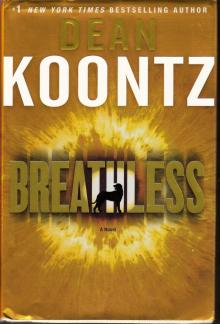 Breathless
Breathless Lightning
Lightning The Taking
The Taking The Door to December
The Door to December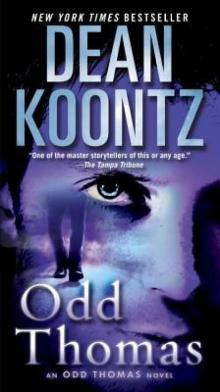 Odd Thomas
Odd Thomas Midnight
Midnight Whispers
Whispers Odd Interlude #2
Odd Interlude #2 The Mask
The Mask Watchers
Watchers By the Light of the Moon
By the Light of the Moon Night Chills
Night Chills Brother Odd
Brother Odd False Memory
False Memory The Darkest Evening of the Year
The Darkest Evening of the Year Life Expectancy
Life Expectancy The Good Guy
The Good Guy Hideaway
Hideaway Innocence
Innocence Your Heart Belongs to Me
Your Heart Belongs to Me Forever Odd
Forever Odd Intensity
Intensity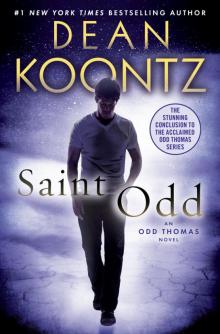 Saint Odd
Saint Odd Dragon Tears
Dragon Tears The Husband
The Husband Final Hour
Final Hour Demon Seed
Demon Seed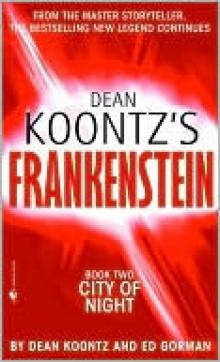 City of Night
City of Night From the Corner of His Eye
From the Corner of His Eye A Big Little Life: A Memoir of a Joyful Dog
A Big Little Life: A Memoir of a Joyful Dog Seize the Night
Seize the Night Winter Moon
Winter Moon Strange Highways
Strange Highways The Silent Corner
The Silent Corner Twilight Eyes
Twilight Eyes Velocity
Velocity The Bad Place
The Bad Place Cold Fire
Cold Fire The Whispering Room
The Whispering Room Ricochet Joe
Ricochet Joe The Crooked Staircase
The Crooked Staircase Tick Tock
Tick Tock The Face
The Face Sole Survivor
Sole Survivor Strangers
Strangers Deeply Odd
Deeply Odd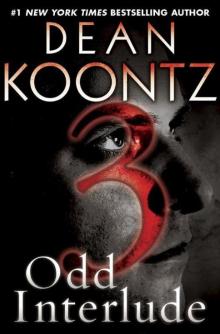 Odd Interlude #3
Odd Interlude #3 The Vision
The Vision Phantoms
Phantoms Prodigal Son
Prodigal Son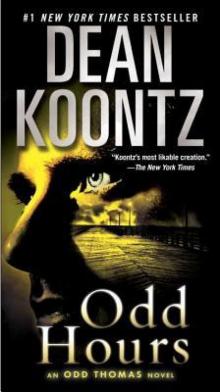 Odd Hours
Odd Hours Last Light
Last Light Fear Nothing
Fear Nothing Odd Interlude #1
Odd Interlude #1 One Door Away From Heaven
One Door Away From Heaven Koontz, Dean R. - Mr. Murder
Koontz, Dean R. - Mr. Murder The City
The City The Dead Town
The Dead Town The Voice of the Night
The Voice of the Night Dark Rivers of the Heart
Dark Rivers of the Heart The Key to Midnight
The Key to Midnight Lost Souls
Lost Souls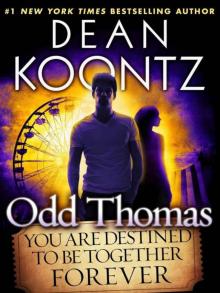 Odd Thomas: You Are Destined To Be Together Forever
Odd Thomas: You Are Destined To Be Together Forever Odd Apocalypse
Odd Apocalypse Icebound
Icebound The Book of Counted Sorrows
The Book of Counted Sorrows The Neighbor
The Neighbor Ashley Bell
Ashley Bell Santa's Twin
Santa's Twin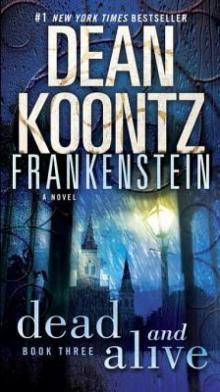 Dead and Alive
Dead and Alive The Eyes of Darkness
The Eyes of Darkness The Odd Thomas Series 4-Book Bundle
The Odd Thomas Series 4-Book Bundle Writing Popular Fiction
Writing Popular Fiction City of Night f-2
City of Night f-2 Dean Koontz's Frankenstein 4-Book Bundle
Dean Koontz's Frankenstein 4-Book Bundle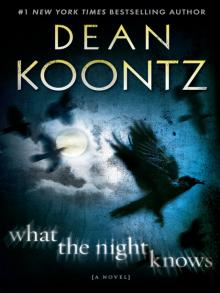 What the Night Knows: A Novel
What the Night Knows: A Novel Demon Child
Demon Child Starblood
Starblood Surrounded mt-2
Surrounded mt-2 Odd Interlude #3 (An Odd Thomas Story)
Odd Interlude #3 (An Odd Thomas Story)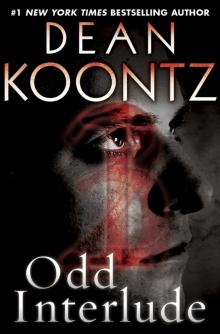 Odd Interlude
Odd Interlude The Odd Thomas Series 7-Book Bundle
The Odd Thomas Series 7-Book Bundle The City: A Novel
The City: A Novel Deeply Odd ot-7
Deeply Odd ot-7 Odd Interlude #1 (An Odd Thomas Story)
Odd Interlude #1 (An Odd Thomas Story) The House of Thunder
The House of Thunder Odd Interlude ot-5
Odd Interlude ot-5 Fear That Man
Fear That Man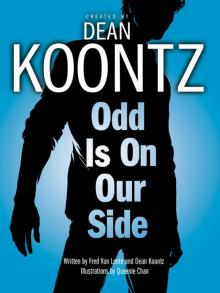 Odd Is on Our Side
Odd Is on Our Side Relentless
Relentless A Big Little Life
A Big Little Life Hanging On
Hanging On The Forbidden Door
The Forbidden Door Dragonfly
Dragonfly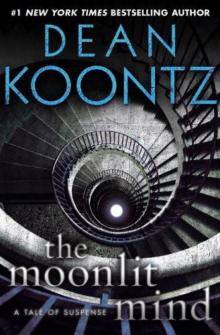 The Moonlit Mind: A Tale of Suspense
The Moonlit Mind: A Tale of Suspense Final Hour (Novella)
Final Hour (Novella) The Odd Thomas Series 4-Book Bundle: Odd Thomas, Forever Odd, Brother Odd, Odd Hours
The Odd Thomas Series 4-Book Bundle: Odd Thomas, Forever Odd, Brother Odd, Odd Hours Odd Interlude (Complete)
Odd Interlude (Complete)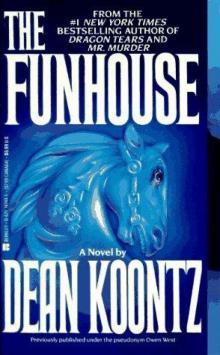 The Funhouse
The Funhouse 77 Shadow Street
77 Shadow Street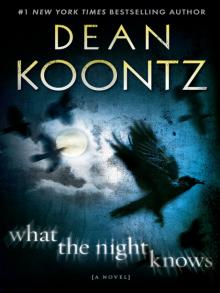 What the Night Knows
What the Night Knows Deeply Odd: An Odd Thomas Novel
Deeply Odd: An Odd Thomas Novel The Servants of Twilight
The Servants of Twilight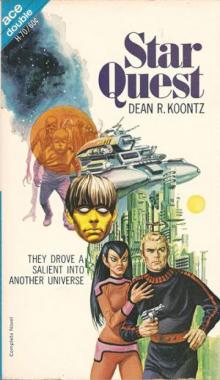 Star quest
Star quest Frankenstein Dead and Alive: A Novel
Frankenstein Dead and Alive: A Novel Chase
Chase Eyes of Darkness
Eyes of Darkness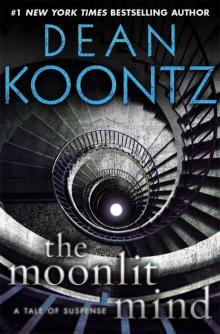 The Moonlit Mind: A Tale of Suspense (Kindle Single)
The Moonlit Mind: A Tale of Suspense (Kindle Single) Sussurri
Sussurri The Moonlit Mind (Novella)
The Moonlit Mind (Novella) Frankenstein: Lost Souls - A Novel
Frankenstein: Lost Souls - A Novel![Ricochet Joe [Kindle in Motion] (Kindle Single) Read online](http://i1.bookreadfree.com/i2/04/05/ricochet_joe_kindle_in_motion_kindle_single_preview.jpg) Ricochet Joe [Kindle in Motion] (Kindle Single)
Ricochet Joe [Kindle in Motion] (Kindle Single) Innocence: A Novel
Innocence: A Novel Beastchild
Beastchild A Darkness in My Soul
A Darkness in My Soul Oddkins: A Fable for All Ages
Oddkins: A Fable for All Ages The Frankenstein Series 5-Book Bundle
The Frankenstein Series 5-Book Bundle Frankenstein - City of Night
Frankenstein - City of Night Shadowfires
Shadowfires Last Light (Novella)
Last Light (Novella) Frankenstein - Prodigal Son
Frankenstein - Prodigal Son Ticktock
Ticktock Dance with the Devil
Dance with the Devil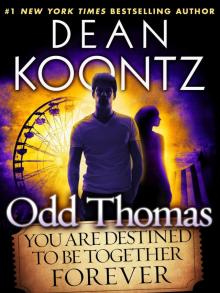 You Are Destined to Be Together Forever (Short Story)
You Are Destined to Be Together Forever (Short Story) The Moonlit Mind (Novella): A Tale of Suspense
The Moonlit Mind (Novella): A Tale of Suspense Darkness Under the Sun
Darkness Under the Sun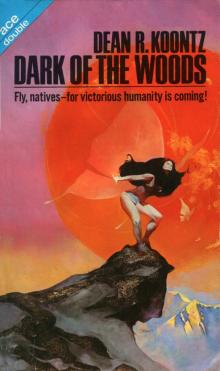 Dark Of The Woods
Dark Of The Woods Dean Koontz's Frankenstein
Dean Koontz's Frankenstein Frankenstein
Frankenstein The Face of Fear
The Face of Fear Children of the Storm
Children of the Storm Mr. Murder
Mr. Murder